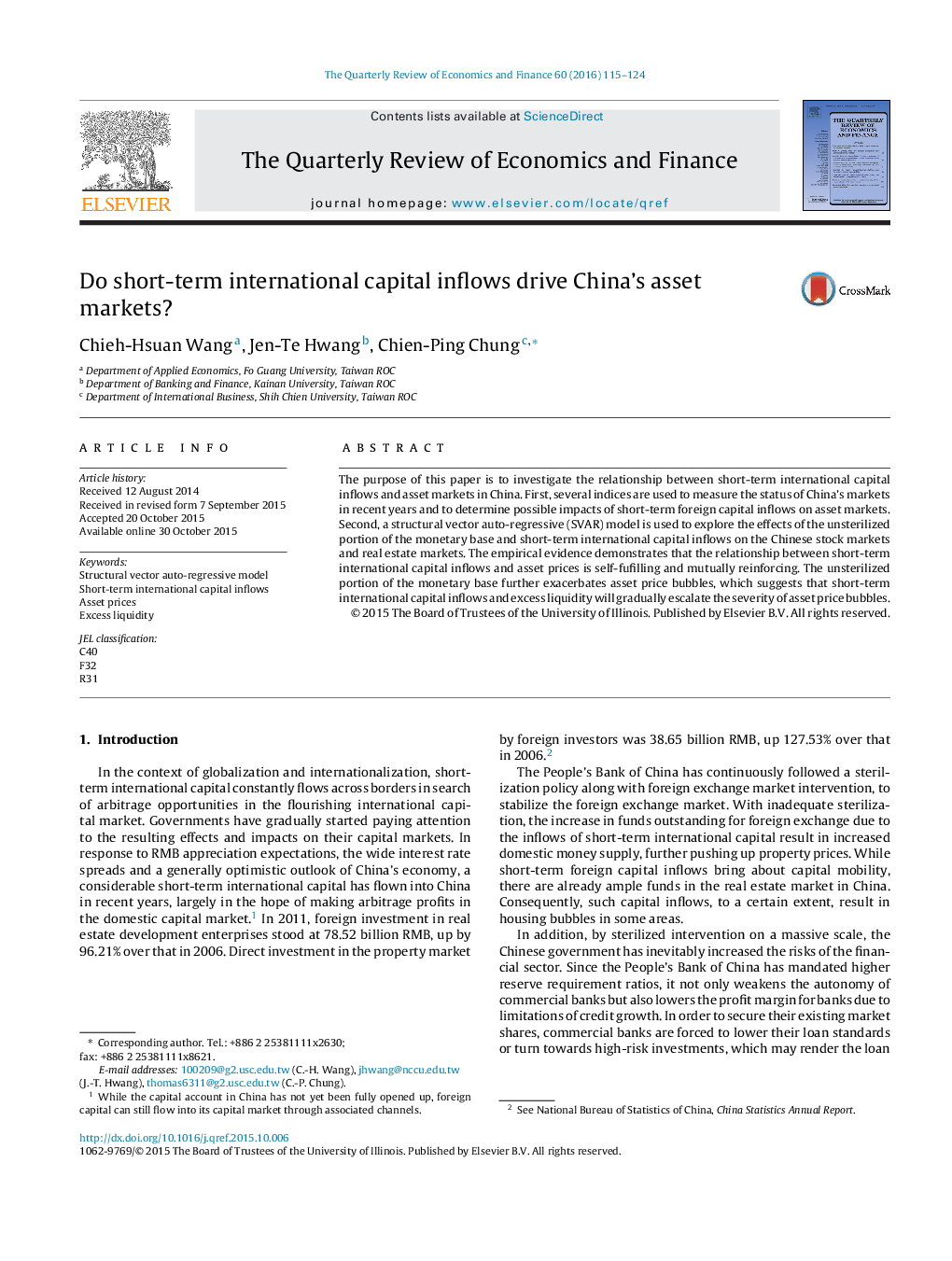| Article ID | Journal | Published Year | Pages | File Type |
|---|---|---|---|---|
| 980346 | The Quarterly Review of Economics and Finance | 2016 | 10 Pages |
•Several indices are used to measure the status of China's markets in recent years and to determine possible impacts of short-term foreign capital inflows on asset markets.•This paper employs a SVAR model to analyze the relationships among the unsterilized portion of the monetary base, short-term international capital inflows, and asset prices.•The empirical evidence demonstrates that the relationship between short-term international capital inflows and asset prices is self-fulfilling and mutually reinforcing.•The incompletely sterilized monetary base further exacerbates asset price bubbles, which suggests that short-term international capital inflows and excess liquidity will gradually escalate the severity of asset price bubbles.
The purpose of this paper is to investigate the relationship between short-term international capital inflows and asset markets in China. First, several indices are used to measure the status of China's markets in recent years and to determine possible impacts of short-term foreign capital inflows on asset markets. Second, a structural vector auto-regressive (SVAR) model is used to explore the effects of the unsterilized portion of the monetary base and short-term international capital inflows on the Chinese stock markets and real estate markets. The empirical evidence demonstrates that the relationship between short-term international capital inflows and asset prices is self-fufilling and mutually reinforcing. The unsterilized portion of the monetary base further exacerbates asset price bubbles, which suggests that short-term international capital inflows and excess liquidity will gradually escalate the severity of asset price bubbles.
